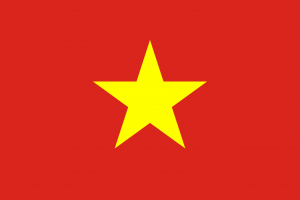Language/Vietnamese/Grammar/Pronouns-and-Personal-Pronouns/az
 Հայերէն
Հայերէն Български език
Български език 官话
官话 官話
官話 Hrvatski jezik
Hrvatski jezik Český jazyk
Český jazyk Nederlands
Nederlands English
English Suomen kieli
Suomen kieli Français
Français Deutsch
Deutsch עברית
עברית हिन्दी
हिन्दी Magyar
Magyar Bahasa Indonesia
Bahasa Indonesia فارسی
فارسی Italiano
Italiano 日本語
日本語 Қазақ тілі
Қазақ тілі 한국어
한국어 Lietuvių kalba
Lietuvių kalba Νέα Ελληνικά
Νέα Ελληνικά Şimali Azərbaycanlılar
Şimali Azərbaycanlılar Język polski
Język polski Português
Português Limba Română
Limba Română Русский язык
Русский язык Српски
Српски Español
Español العربية القياسية
العربية القياسية Svenska
Svenska Wikang Tagalog
Wikang Tagalog தமிழ்
தமிழ் ภาษาไทย
ภาษาไทย Türkçe
Türkçe Українська мова
Українська мова Urdu
UrduPronouns in Vietnamese[redaktə | mənbəni redaktə et]
Pronouns are an essential part of language that we use every day. They replace nouns to make our speech more fluent and avoid repetition. In Vietnamese, pronouns play a crucial role in communication, and learning them is a fundamental step towards mastering the language.
In Vietnamese, pronouns can be divided into several groups, including personal pronouns, demonstrative pronouns, interrogative pronouns, possessive pronouns, and relative pronouns. In this lesson, we will focus on personal pronouns.
Personal Pronouns[redaktə | mənbəni redaktə et]
Personal pronouns are used to refer to people or things. In Vietnamese, personal pronouns have various forms depending on the social status, age, and gender of the speaker and the person they are addressing. Here are the different forms of personal pronouns in Vietnamese:
| Vietnamese | Pronunciation | North Azerbaijani |
|---|---|---|
| Tôi | [toj] | Mən |
| Bạn | [ɓan] | Sən |
| Anh ấy | [ʔaŋ˧ˀ˥ jəːj˧ˀ˥] | Onun |
| Cô ấy | [koj˧ˀ˥ jəːj˧ˀ˥] | Onun |
| Chúng tôi | [t͡ɕuŋ˨˩ toj] | Biz |
| Họ | [hɔ̂] | Onlar |
As you can see, there are different pronouns for different levels of formality and social status. For example, "tôi" is used for oneself, "bạn" is used for friends or colleagues, "anh ấy" is used for older brothers or male acquaintances, and "cô ấy" is used for older sisters or female acquaintances. "Chúng tôi" is used for a group of people, while "họ" is used for a third person singular or plural.
Usage of Personal Pronouns[redaktə | mənbəni redaktə et]
In Vietnamese, personal pronouns are used in the same way as in English. They can be used as subjects, objects, or possessive determiners. Here are some examples:
- Subject: Tôi thích ăn phở. (I like to eat pho.)
- Object: Bạn có thể giúp tôi không? (Can you help me?)
- Possessive determiner: Cái áo của anh ấy. (His shirt.)
Conclusion[redaktə | mənbəni redaktə et]
Learning personal pronouns is essential to communicate effectively in Vietnamese. In this lesson, we have learned the different forms of personal pronouns and their usage. Keep practicing, and don't hesitate to ask questions if you need more help!
Other lessons[redaktə | mənbəni redaktə et]
- 0 to A1 Course → Grammar → Adverbs
- 0 to A1 Course → Grammar → Adjectives
- 0 to A1 Course → Grammar → Future Tense Verbs
- 0-dan A1 səviyyəsinə qədər Kurs → Qrammatika → Mövcud Zamanda Fiillər
- Complete 0 to A1 Course → Grammar → Nouns and Gender
- 0 to A1 Course → Grammar → Possessive Pronouns
- 0 to A1 Course → Grammar → Past Tense Verbs
- 0 to A1 Course → Grammar → Modal Verbs
- 0 to A1 Course

